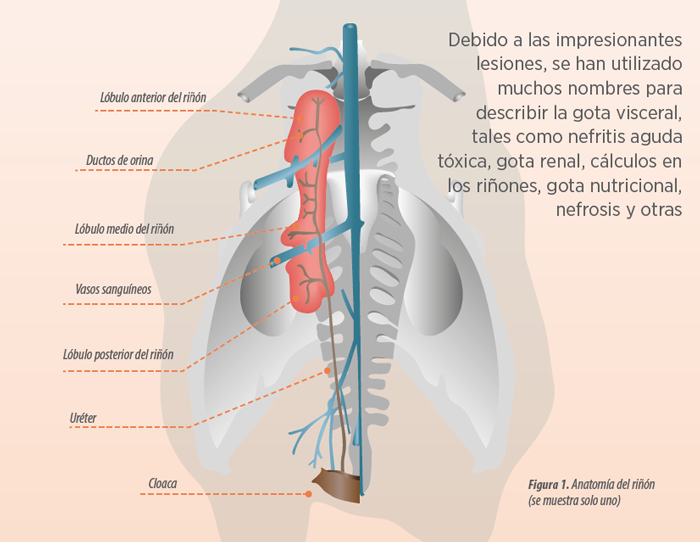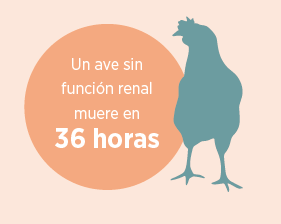RECOMMENDED


Visceral gout is easily recognized by its distinctive lesions characterized by white deposits that cover the surface of various abdominal organs like the heart sac. Gout is a condition in which kidney function decreases to a point that uric acid (nitrogen waste) accumulates in the blood and body fluids.
Subsequently, uric acid precipitates as sodium urate crystals in a variety of locations, particularly in the kidneys and in the serous membranes of the liver, heart, air sacs, and joints.
KIDNEY DAMAGE
The damage to the kidneys is characterized by atrophied parts or missing portions of the lobes and by stones in the kidneys and ureter, while the rest of the kidney tissue is inflamed and with white urates. Compensatory growth of the rest of the normal kidney tissue occurs as an attempt to maintain adequate kidney function. Although gout has long been known to cause mortality in pullets and layers, diagnosis remains a challenge.
Birds that suffer kidney damage can continue to produce until one third of the normal kidney mass continues to function.
 The bird's kidneys are located in the depression of the pelvic bone, in the abdominal cavity. They are normally reddish brown in color and have 3 lobes or divisions. -Figure 1-
The bird's kidneys are located in the depression of the pelvic bone, in the abdominal cavity. They are normally reddish brown in color and have 3 lobes or divisions. -Figure 1-
The main function of the kidneys is to maintain the chemical composition of body fluids (blood).
They also have other functions in the body:
The kidney is truly a vital organ. When kidney function stops, uric acid, which is normally excreted by the kidney in the urine, is deposited anywhere the blood circulates. The cause of gout is often difficult to determine; it is not a single entity disease, but rather the result of kidney damage from a number of potential causes, which may be infectious, nutritional, toxic, or possibly a combination of factors.
The original damage to the kidney can occur long before the onset of gout mortality.
NUTRITIONAL CAUSES OF GOUT
CALCIUM EXCESS
Excess calcium in the diet of immature chicks after a period of time can result in kidney damage. This can result from an error at the feed mill, a wrong delivery of layer feed to a growth house, or from the excessively early use of pre-lay feed.
LIMESTONE
Breeding diets containing limestone particles allow the birds to select these particles, resulting in excessive calcium consumption. To ensure uniform consumption, rearing diets should contain only fine powdered limestone. Particulate limestone can be used at the beginning of the pre-lay diet.
PHOSPHORUS
It has been shown that phosphorus can partially protect the kidney against calcium-induced damage. Phosphorus acts as a urinary acidifier and helps prevent kidney stones from forming.
SODIUM BICARBONATE
Bicarbonate is sometimes used to improve the quality of the eggshell or to fight the effects of heat stress. It can contribute to gout by making the urine more alkaline, which with high levels of calcium, is an ideal medium for kidney stone formation.
WATER DEPRIVATION
Water deprivation can affect kidney function, but research has not shown that it results directly in gout.
VITAMIN A DEFICIENCY
Vitamin A deficiency over a long period of time can cause damage to the lining of the ureters, but this does not occur frequently due to modern Vitamin A manufacturing.
EXCESS PROTEINS
Extreme excess protein in the diet (> 30%) can cause gout in experimental birds.
Subscribe now to the poultry technical magazine